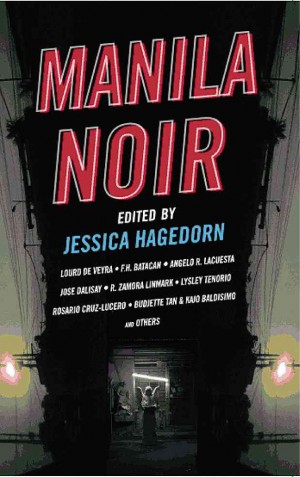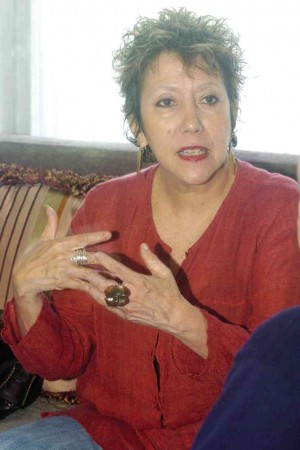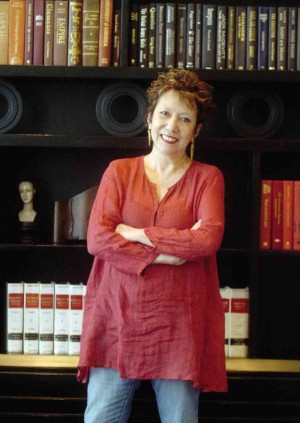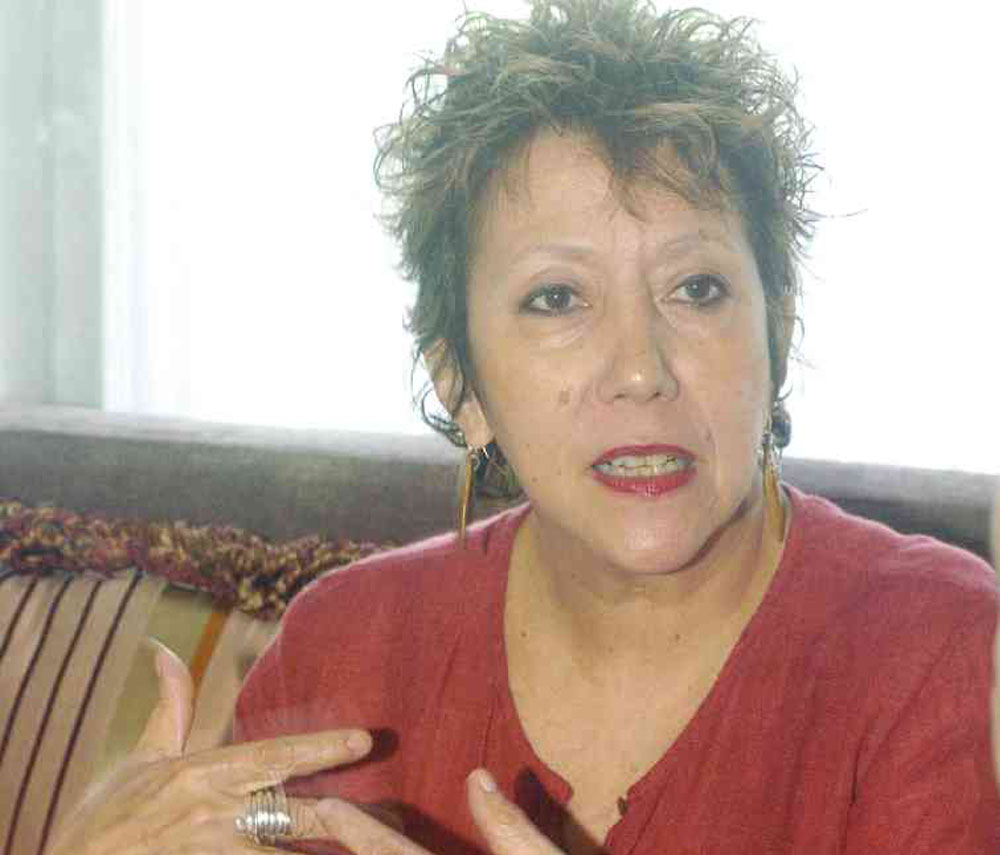 Fierce and fearless, brazen and brave, Jessica Hagedorn is a pilgrim of the written word.
Fierce and fearless, brazen and brave, Jessica Hagedorn is a pilgrim of the written word.
She goes where the word takes her: from the heights of emotions to the depths of despair, from Manila (in 1990’s fire-starting “Dogeaters,” a finalist in the US National Book Award for fiction and winner of the American Book Award) to San Francisco (1997’s psychedelic “The Gangster of Love”) to New York (2011’s intoxicating “Toxicology”), and now back to Manila as editor of the dark, delightful anthology “Manila Noir.”
The new book has been quite a homecoming. After all, she hasn’t been to Manila since 2007. With her trip sponsored by National Book Store, Hagedorn’s tour to promote “Manila Noir” has proven busy and eventful.
Aside from interviews with the press, Hagedorn presided over a packed and enthusiastic launch last July 6, and she seemed both delighted and overwhelmed by the reception.
In a quiet conversation on the morning of the launch at the Writers Bar at Raffles Hotel, Hagedorn was both candid and generous with her words. She has always been so.
Jessica Tarahata Hagedorn was born in Manila in 1949 and moved to the United States in 1963 when she was 14. She emerged as a purveyor of the word in different forms, as an accomplished poet, playwright and fictionist, particularly known for her edgy exploration of the Filipino experience.
She’s also a great editor of anthologies. Lavish critical acclaim greeted her 1993 Penguin book “Charlie Chan Is Dead: An Anthology of Contemporary Asian American Fiction.”
Her itch to edit a new anthology began when she was reading “Mexico City Noir,” the latest book from the Akashic Books noir series. She thought Manila would make the perfect setting for such an anthology. So she wrangled a meeting in 2011 with Akashic Books editor in chief Johnny Temple.
She recalled Temple as saying, “Tell me more about it,” as he had never been to Manila. Temple essentially asked, “Tell me why,” so Hagedorn told him exactly why.
‘Darkness behind the sun’

Soon Hagedorn was choosing the contributors for “Manila Noir.”
For her, noir, especially in the Philippine setting, is “the darkness behind the sun… I think there’s rot and there’s life here. That working-class tragedy aspect of it,” as well as “our belief in the supernatural.”
The culture of Filipinos is not really immersed in crime fiction, but “Manila Noir” can be their gateway drug, an addictive introduction.
Instead of an open call, Hagedorn chose to carefully recruit. She chose writers she knew would deliver and, when it came to the writers who came recommended but she did not know personally or worked with previously, “I asked my friends here to buy me their books. Some of their stuff didn’t work for me, so I didn’t contact those people. But those whose stuff really jumped out at me, I was like, ‘Oh my God. These are the lively voices.’ I was looking for a certain edge and fearlessness. You can feel it in the work.”
All the Akashic noir books featured each contribution as rooted in a unique setting, with the city as a character in general. Hagedorn had each of her contributors choose a specific location in Manila, with Hagedorn herself choosing posh Forbes Park, where she spent a lot of time growing up, as the setting for her story “Old Money.”
She had wanted to write about her childhood haunt, old Sta. Mesa, but changed her mind because she didn’t want to do a story set in the past.
“I’m always interested in the class thing, and Forbes is old money. The title came to me first. I was interested in writing about the now, and pulling off writing about a place without being here. (Forbes Park) hasn’t changed, on both sides of the spectrum.”
She believes you have to write about a place from a distance. “You can see things more clearly,” she explained.
In the end, “Manila Noir” boasted the formidable lineup of Gina Apostol, F.H. Batacan, Rosario Cruz-Lucero, Jose Dalisay, Lourd De Veyra, Eric Gamalinda, Angelo R. Lacuesta, R. Zamora Linmark, Sabina Murray, Lysley Tenorio, Marianne Villanueva and Jonas Vitman; along with the graphic lit team of Budjette Tan and Kajo Baldisimo.
The book is not only convincing in its portrayal of the settings, but also in capturing the light and the dark found there.
“Manila Noir” has received rave reviews and Hagedorn can’t be more pleased because she was impressed with the quality of the work.

“I’m super thrilled by the directions they’re going in and I feel this ‘Noir’ book can help show the world, there are all these incredible writers who have been writing for quite a while,” she explained. “You don’t know about them and they deserve to be read. And I feel like some of these writers are doing world-class work.”
Even as “Manila Noir” lurched closer to release, Hagedorn had a fateful meeting with Anvil Publishing’s Karina Bolasco in New York on the heels of the destructive Hurricane “Sandy” in 2012. It was during that meeting that Bolasco, who had agreed to produce a Philippine edition of “Manila Noir,” convinced Hagedorn to come to Manila to promote it through the sponsorship of National Book Store.
Strong collaboration
Hagedorn wound up having a strong collaborative relationship with her “Manila Noir” contributors.
At the launch, she met several of her contributors for the first time, among them, Singapore-based Batacan, Cruz-Lucero, De Veyra and Lacuesta, with several of them praising her role in the shaping of their stories.
That guidance was yet another facet in Hagedorn’s relationship with writing.
“I write only when I’m under deadline. When I’m under deadline, you cannot talk to me, and I write every day,” she said.
Teaching creative writing in New York usually kept her quite busy. She doesn’t quite know what comes next, save that she already has something in mind: “I have an idea brewing in my mind. I don’t know if it it’s a long short story or a novel. It’s at such a beginning stage, that’s all I know. I’m half writing it in my head.”
She certainly isn’t coy when it comes to what she thinks. Asked about “Inferno” author Dan Brown’s describing Manila as “the gates of Hell,” she said: “What’s the difference between what he’s doing and what I’m doing. Why would mine be appreciated and his not? First of all, he’s a sh__ty writer. He can’t write. I have never understood it. I don’t even think Stieg Larsson can write. His stuff bored me. I find his prose deadening. I don’t get these blockbuster novelists whose books people pick up in airports. It feels fake… (Brown) has all the right to call anything ‘the gates of Hell.’ I haven’t read but I can only imagine how poorly executed it is, like everything else he writes.”
Manila may have some development on the surface, but to Hagedorn it’s still the same place. “I think it can be (dangerous). Any place with this kind of disparity (between rich and poor) can be, including the US. But here it’s pretty extreme, but that doesn’t mean it isn’t a beautiful place, too, with amazing people. I think life is so complicated that sometimes we get defensive a little too easily, and I think it just gives more fodder to the conversation.”
It’s the people she missed the most.
There has always been an organic, instinctive quality to Hagedorn’s writing that gives it a kind of sharpness, a hint of danger, and that same quality gives her body of work a sense of conscious, continuing evolution, of being a work-in-progress, essentially an ongoing Jessica Hagedorn project.
She characterizes her work as being permeated by “grit, bleakness, memory and moral ambiguity.”
“Manila Noir” was the next logical extension of it. “Absolutely,” Hagedorn said. “I’ve always been drawn to this form and subject matter. All my life, all I’ve been writing is actually noir. Now I can actually enjoy thinking, I’m obsessed with detective and cops and dead people. What’s the story behind them? To me, it’s moral ambiguity and what drives a human being to that point when they’re capable of the most profound destructive act. What better subject, right?”









































